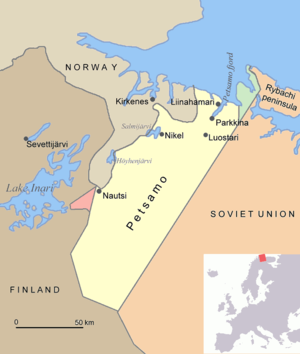“Finland as an Arctic country is one of many in the Arctic circle of friends. However, only about 1/3 of Finland geographically is situated within the Arctic Circle. Throughout the Arctic Circle, those that are living above the 60th parallel of latitude are predominantly Finns, with these statics being close to 1 in 3. Finland is an Arctic country with a historical presence in the cold winter climate of the close Arctic proximity.”
This post is an article from the Bloggers Guide To Arctic Finland Book.
“The North-East Fennoscandia and now part of Finland area was initially inhabited by the Sami indigenous peoples. There are cave paintings that go back to 9000 to 6000 BC in the Finnmark region of the current Norway http://en.wikipedia.org/wiki/Norway
It later became under the influence of the kingdom of Sweden In 1533, it became part of Russia. In 1920, the area became part of Finland. The area was later annexed and ceded over in 1944 to the Soviet Union under the World War 2 expansionist ambitions of the Soviet leader Joseph Stalin.”

Arctic Sea fish resources
Finland access to the Arctic Sea came about by the Treaty of Tartu.
“Treaty of Tartu (Russian: Тартуский мирный договор, Finnish: Tarton rauha) between Finland and Soviet Russia that was signed on 14 October 1920 after negotiations that lasted four months. The treaty confirmed the border between Finland and Soviet Russia after the Finnish civil war and Finnish volunteer expeditions in Russian East Karelia. Ratifications of the treaty were exchanged in Moscow on December 31, 1920. The treaty was registered in the League of Nations Treaty Series on March 5, 1921. The treaty confirmed that the Finnish-Soviet border would follow the old border between the autonomous Grand Duchy of Finland and Imperial Russia. Finland additionally received Petsamo, with its ice-free harbor on the Arctic Ocean. As far back as 1864, Tsar Alexander II had promised to join Petsamo to Finland in exchange for a piece of the Karelian Isthmus.”
http://en.wikipedia.org/wiki/Treaty_of_Tartu
From 1920 to 1939 Finland had access to the Arctic Sea for the natural resources of fishing by the Port of Petsamo. It was blocked by the Soviet Union invasion in 1939 and a few years later became annexed in 1945. Before this, Finland had access to the Barents Sea from 1920 to 1939.
Extremes of Finland
Lapland is one of the northernmost provinces in Finland, and there are periods during the summer when the sun does not set for weeks on end. However, during the winter month’s, the sun stays below the horizon for weeks at a time. It is during winter in Finland that snow coats the region and rivers freeze completely. The cold and frigid temperatures are nothing new to those living in Finland. Temperatures below 30 degrees Celsius are ordinary during winter, and in the summer season, the temperatures can rise above 30+ degrees Celsius.
Surviving Arctic Conditions
Those living in Finland have become used to the Arctic conditions that come with close proximity to the North pole, tradition, and culture in the region has adopted the customs to the Arctic conditions over time. In terms of international trade, Finland is often referred to as an island. This is because most export and essential is done by sea. Even though the weather in Finland can be treacherous and unpredictable, that has not stopped Finish ports from being kept ice-free at all times. This allows Finland to be known as the top maritime industry location. Did you know that more than half of the world’s ice-breakers are produced in Finland?
Arctic Finland Arctic Sea Importance to Finland
Arctic Finland Arctic Sea has sustainable, practical use in the maritime industry integral to Finland, but construction and the mining industry have also become to mine in Finland. The Arctic conditions of this region historically have been manipulated to allow specific industries to succeed in the unique, sensitive Arctic environment.
Access to the Barents Sea
“Finland had access to the Barents Sea fishing by the Port of Petsamo from 1920 to 1939, but the Petsamo municipality and the Port of Petsamo gave access to the Arctic Ocean. The Petsamo municipality that was granted by the Nicholas 2 was revoked the Soviet Union Leader ambitions Joseph Stalin in 1939 and 1944. It is reasonable for Finland to petition for the return of the land that was wrongfully taken away in 1940 and 1944 along the shoreline of the Arctic Ocean. It is a practical gesture that does affect the economy of Finland, natural resources, and energy that Finland provides to the Arctic region, its access is called for and should be granted. The Gulf of Finland was a natural resource of fishing for the people of Finland and Karelia ever since the beginning of the Nomads settling there over 3000 years ago. However, the totalitarian expansion and encroachment of the Soviet Union into the territory of the people of Finland in the Karelian Isthmus came from the ever-growing population of Russian Petersburg and their desire to gravitate towards Europe like it was a cash magnet.”
Thank you for visiting www.Arcticsuomi.com website and reading this article. More related material at Arctic Suomi Face Book page. www.facebook.com/ExperienceArcticEnvironment/

